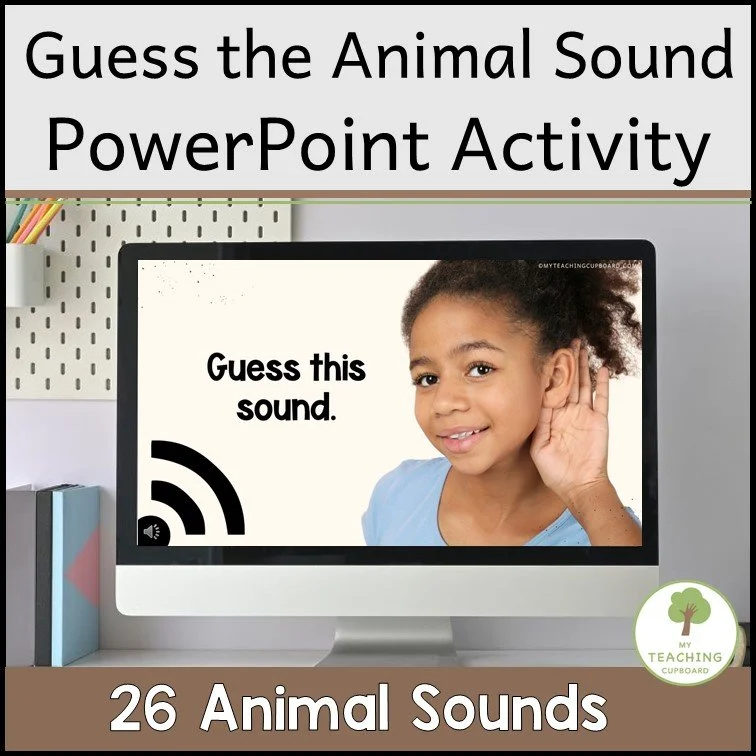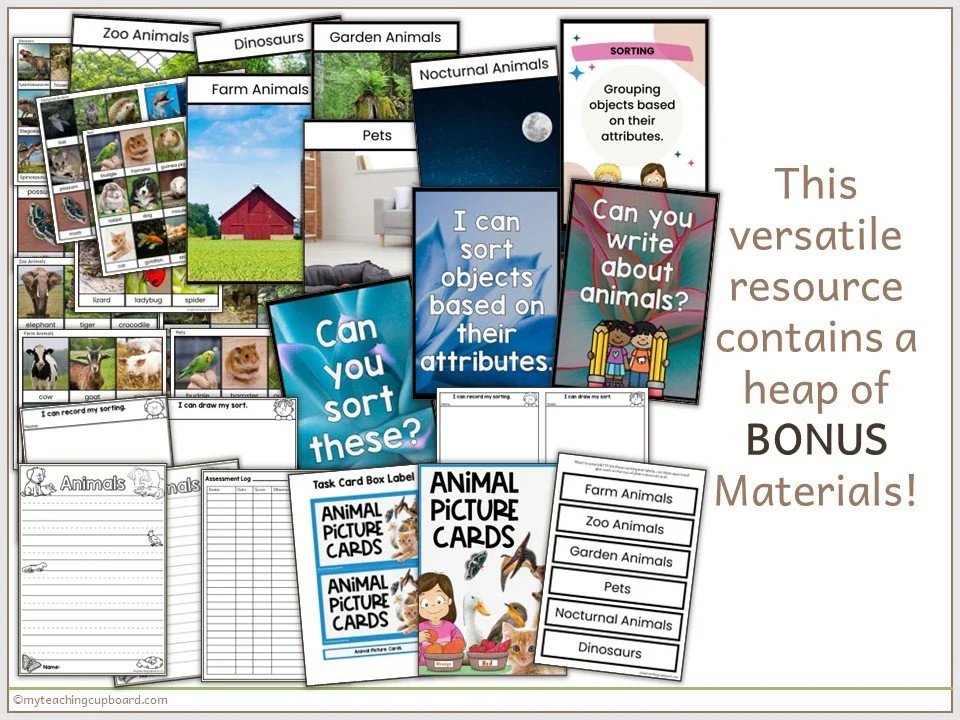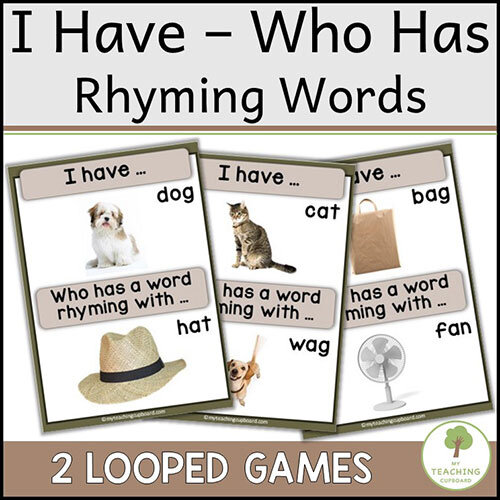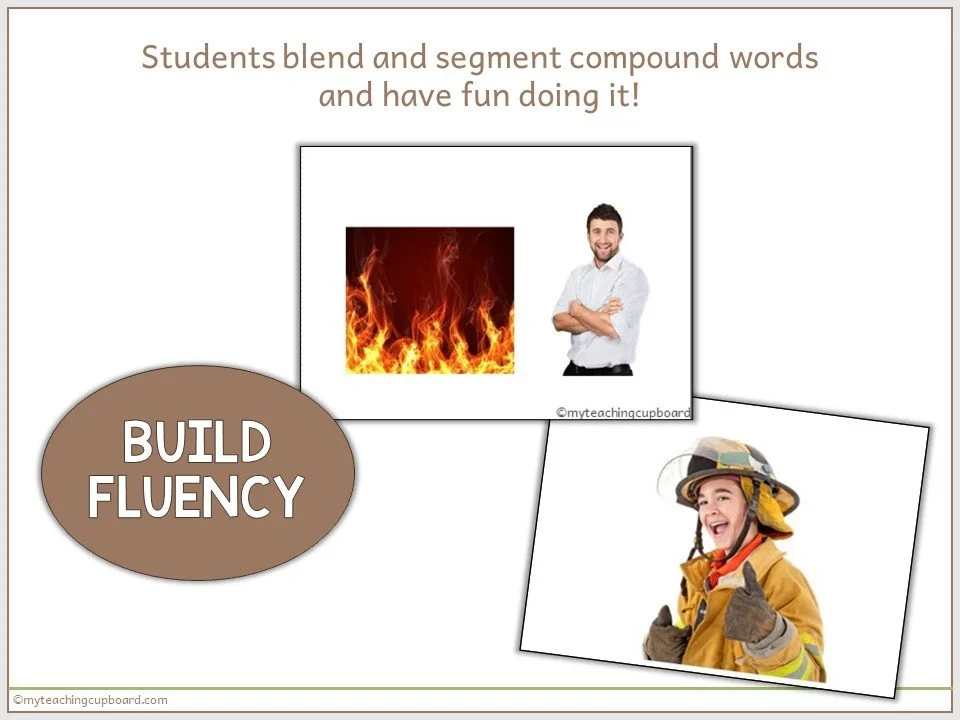Sentence Segmentation - Counting Words in Sentences Activity
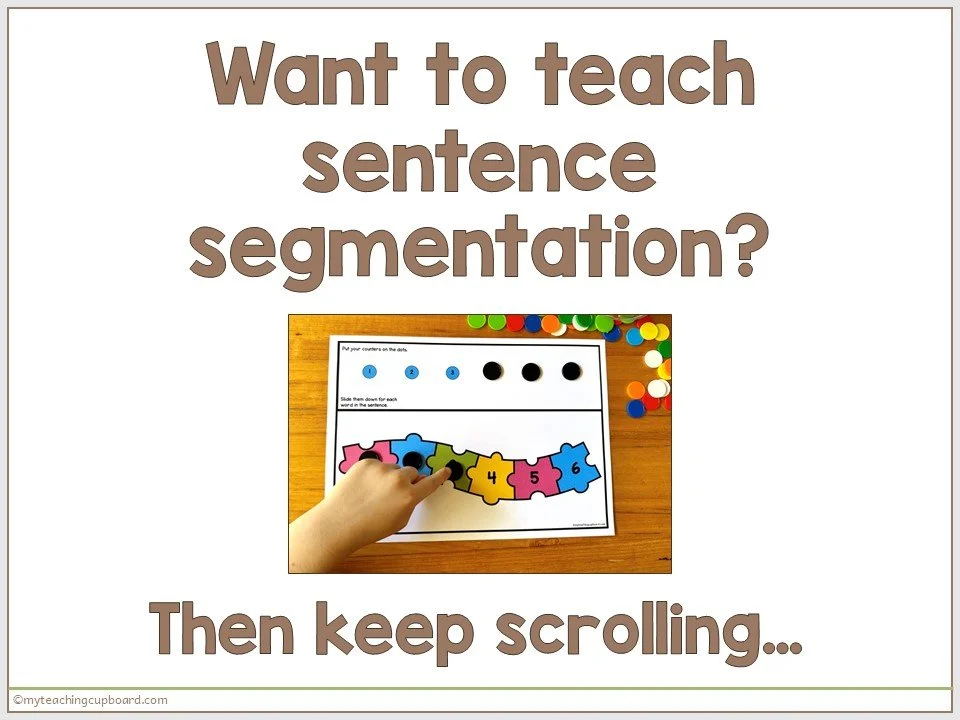


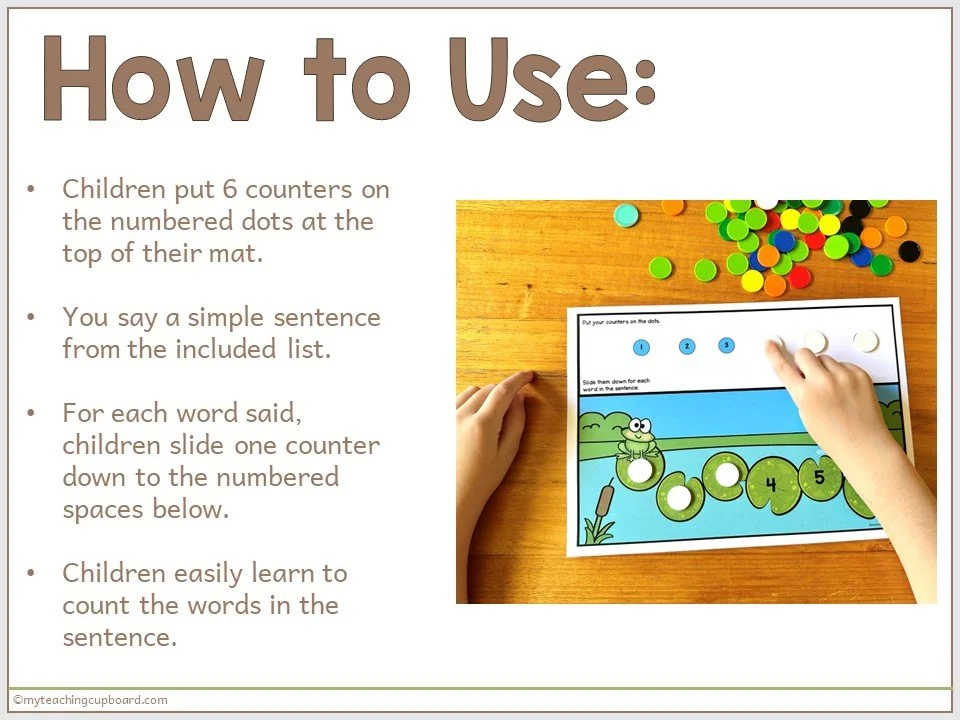
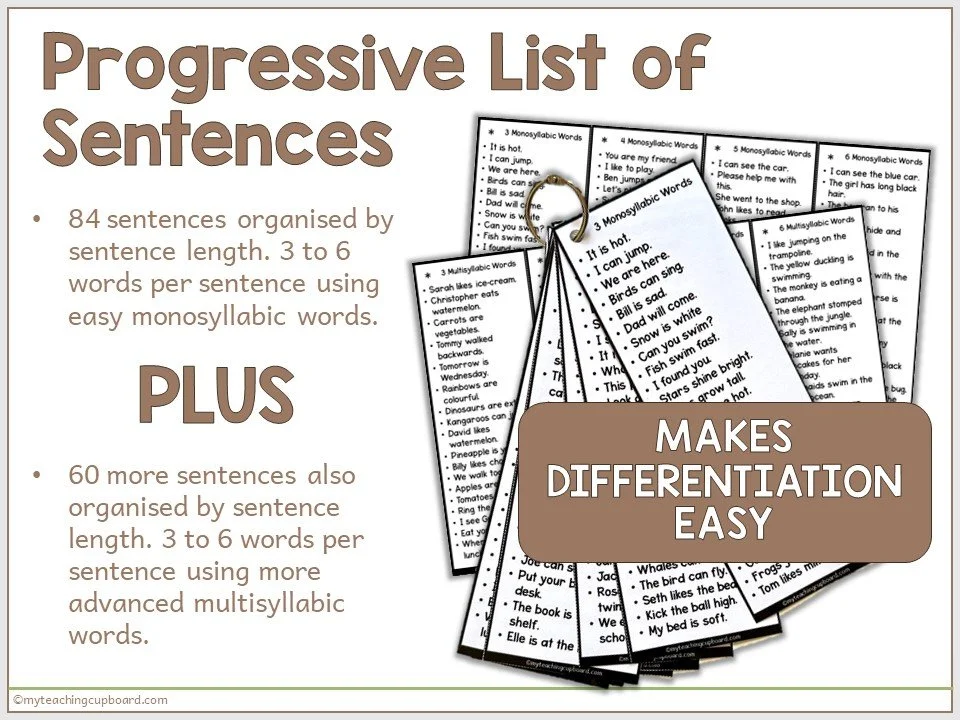
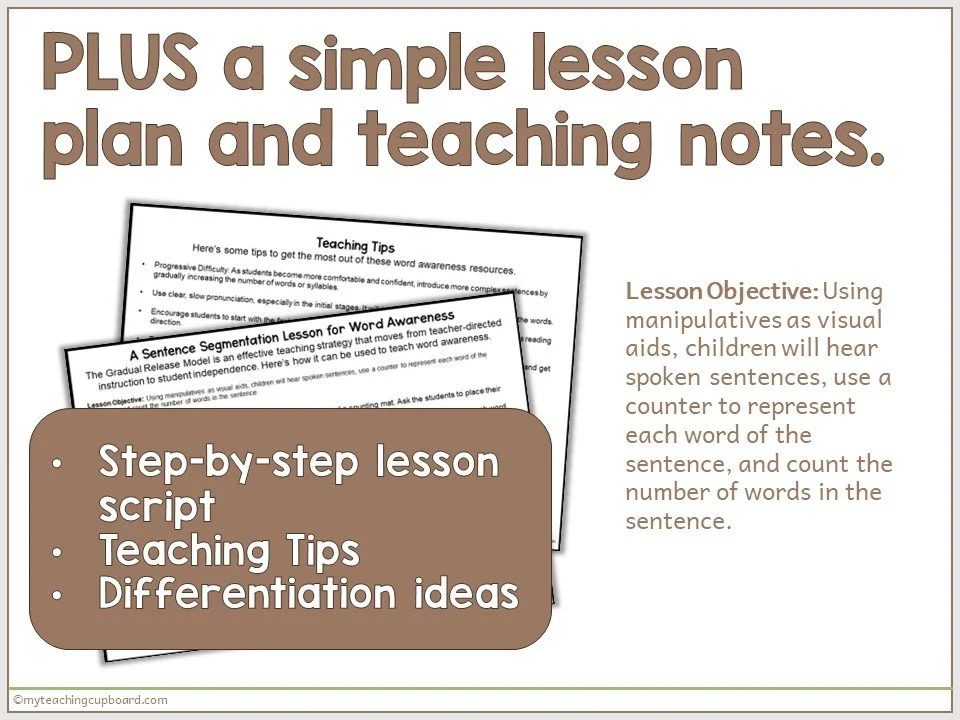
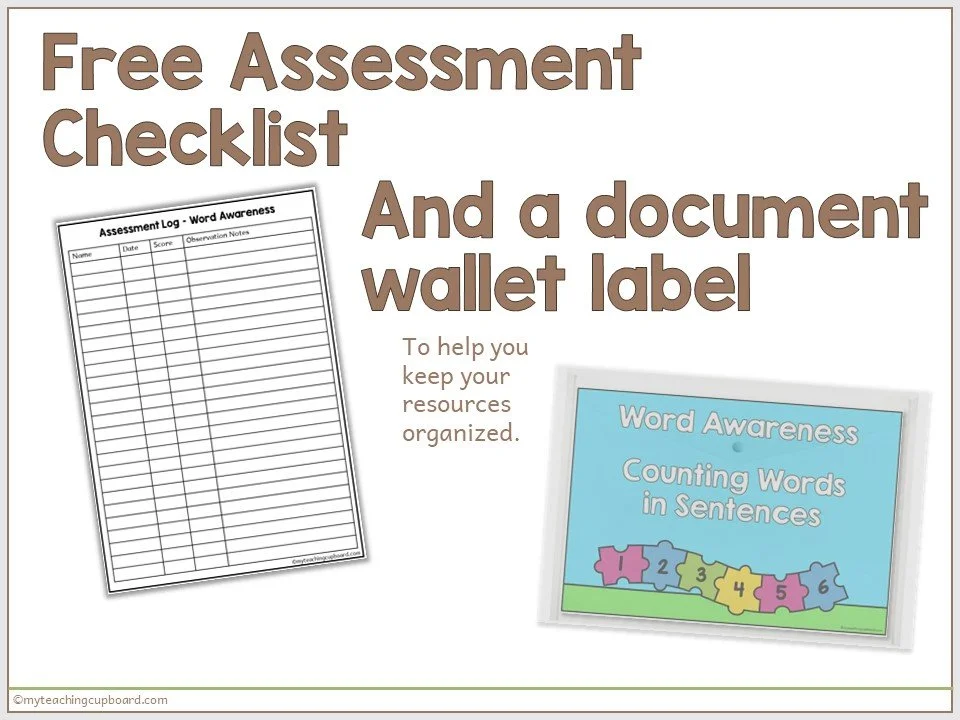
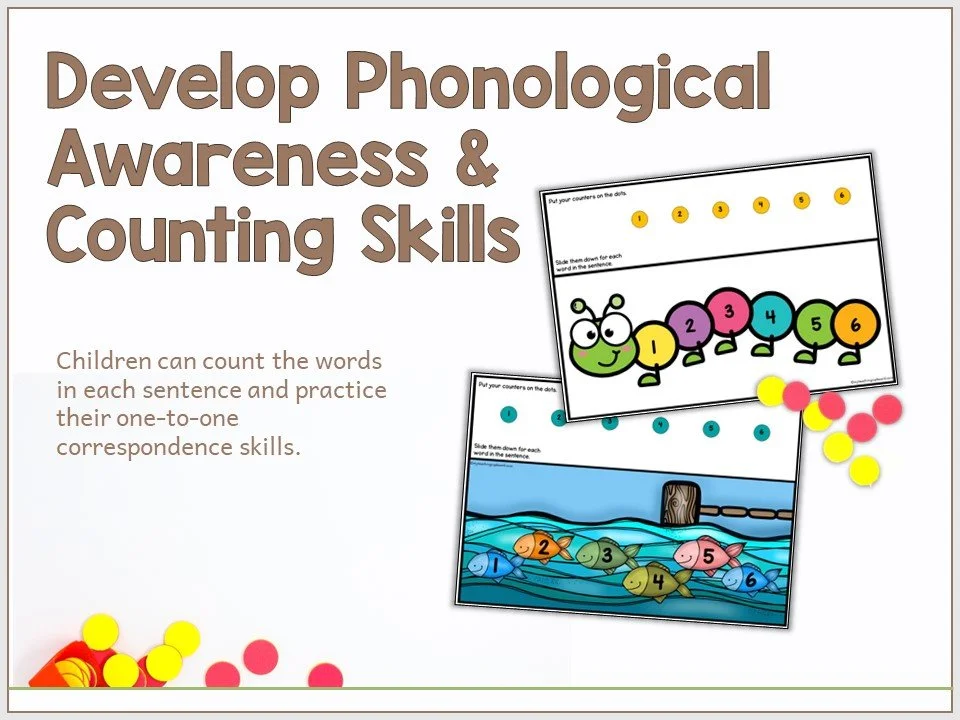
Sentence Segmentation - Counting Words in Sentences Activity
Teach sentence segmentation with this activity for counting words in sentences. Use the printable word counting mats and example simple sentences for small groups or whole group literacy activities. Sentence segmenting is the first level of phonological awareness, and this activity makes teaching it super easy.
Because phonological awareness is about auditory and oral language skills, there are no printed sentences for the children to read in this activity.
Easily Teach Word Awareness
Word awareness, or knowing that sentences are made up of individual words, is a prerequisite skill for reading and writing. This crucial skill needs to be explicitly taught. It comes before syllable awareness, onset and rime and phonemic awareness in the phonological continuum.
When teaching students how to count words in a sentence, use activities like this one so they recognise each word as its own unit. To do this, begin with segmenting short three and four-word sentences and use manipulatives like counters or blocks to represent the words.
Using hands-on activities with manipulatives keeps students engaged and on task. With this in mind, I designed a collection of printable word-counting mats that can be used with manipulatives like blocks or counters. Students represent and count the words in each sentence with the manipulatives and the printable mats in this comprehensive resource.
This Sentence Segmentation Resource Contains:
10 word counting mats.
84 sentences organised in a progressive list ranging in length from 3 to 6 words per sentence. The words in this easier set of sentences consist of only monosyllabic words.
60 sentences organised in a progressive list ranging in length from 3 to 6 words per sentence. The words in this second, more difficult set of sentences, consist of a combination of monosyllabic and multisyllabic words.
A simple lesson plan and teaching notes for teaching sentence segmentation.
A teacher checklist to track students' progress and understanding of word awareness.
A document wallet label to print and help you keep the resources organised.
Move from Simple to Complex Sentences
To teach word awareness, start with simple 3-word sentences with monosyllabic words. Then progress to more complex, longer sentences with multisyllabic words. I've made this research-backed process easy for you. In this resource, there’s a progressive list of 144 sentences to guide you.
NOTE: Since this activity focuses on phonological awareness, it is important not to show the written sentences to the children.
The length of your sentence and the number of syllables in your words affect how difficult sentence segmentation is for students. Not only is there a progressive list of sentences, but I have also included teaching tips and a simple, easy-to-follow step-by-step lesson to help you.
Differentiate Your Sentence Segmentation Activities
The objectives of this word awareness activity are for children to:
use manipulatives as visual aids
hear spoken sentences
use a counter to represent each sentence word
count the number of words in the sentence
This activity for recognising and counting the words in sentences can easily be differentiated.
For Intervention: If you have a child who displays difficulties or inconsistent skills, use the two-word and three-word sentences included in the resource and explicitly follow the lesson script and steps consistently. I have found some children need more practice until the concept of a word is understood.
For Extension: If you have children who need extending, here's a simple activity to further enhance their word awareness. Say one of the included sentences with a missing word and ask your students to fill in the blank. An oral cloze activity consolidates the concept of a word and encourages children to think about the structure and meaning of the sentence.
Your students will quickly learn the concept of a word and know that sentences are made up of individual words when you give them practical examples and a clear progression from simple to more complex sentences. Following the approach outlined in this activity will help young learners develop a solid understanding of word awareness and sentence segmentation.



